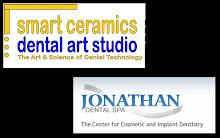We should discuss teeth in an hour and see some of the benefits.
What is Teeth in an Hour?
By now, I bet that many of you have seen ads or news stories about “Teeth in an Hour” and wonder what this is really all about. Over 30 years ago, Dr. P. I. Brånemark put together a technique for placing and restoring dental implants that proved to be far superior to anything that had come before. Dr. Brånemark’s use of Titanium for the construction of the implant proved to be a boon to the profession and the patients who were missing teeth. The procedure was almost 100% successful and lead to the development of major dental implant markets throughout the world providing thousands of patients with “new teeth”. There was one problem, however, in that it took literally months to get these new teeth and many patients and dentists did not want to wait this long. Researchers and clinicians began to study methods of speeding up the process and one of the major results of this research lead to “teeth in an Hour”. Teeth in an Hour is a method utilizing radiographic 3-dimensional scans to make a totally accurate representation of the patients jaw and then constructing a mechanical template on this jaw which allows the dentist to place implants with extreme precision. As a matter of fact, the precision is so good that you can actually make up the final restoration (the new teeth) on the model and transfer everything exactly to the patient’s real jaw. Using the template in the patient’s mouth, the implants are precisely placed and then the new teeth are attached allowing the patient to leave within and hour or two or three with a complete set of teeth ready for action.
Benefits:
Of course, you get your teeth right away instead of waiting 3 to 6 months or more. You also benefit from faster healing with the implant surgery and implant placement is more precise than if the dentist did it by hand.
Problem Areas:
This type of treatment is much more expensive than the “old fashioned” way of placing implants and waiting until they are ready for the new teeth. If it is not done absolutely correctly, the new teeth may not fit and there may be a significant delay in getting the teeth. There is a slightly higher incidence of implant failure in these cases.
This has been taken from www.dental-implants.com
What is Teeth in an Hour?
By now, I bet that many of you have seen ads or news stories about “Teeth in an Hour” and wonder what this is really all about. Over 30 years ago, Dr. P. I. Brånemark put together a technique for placing and restoring dental implants that proved to be far superior to anything that had come before. Dr. Brånemark’s use of Titanium for the construction of the implant proved to be a boon to the profession and the patients who were missing teeth. The procedure was almost 100% successful and lead to the development of major dental implant markets throughout the world providing thousands of patients with “new teeth”. There was one problem, however, in that it took literally months to get these new teeth and many patients and dentists did not want to wait this long. Researchers and clinicians began to study methods of speeding up the process and one of the major results of this research lead to “teeth in an Hour”. Teeth in an Hour is a method utilizing radiographic 3-dimensional scans to make a totally accurate representation of the patients jaw and then constructing a mechanical template on this jaw which allows the dentist to place implants with extreme precision. As a matter of fact, the precision is so good that you can actually make up the final restoration (the new teeth) on the model and transfer everything exactly to the patient’s real jaw. Using the template in the patient’s mouth, the implants are precisely placed and then the new teeth are attached allowing the patient to leave within and hour or two or three with a complete set of teeth ready for action.
Benefits:
Of course, you get your teeth right away instead of waiting 3 to 6 months or more. You also benefit from faster healing with the implant surgery and implant placement is more precise than if the dentist did it by hand.
Problem Areas:
This type of treatment is much more expensive than the “old fashioned” way of placing implants and waiting until they are ready for the new teeth. If it is not done absolutely correctly, the new teeth may not fit and there may be a significant delay in getting the teeth. There is a slightly higher incidence of implant failure in these cases.
This has been taken from www.dental-implants.com


0 Comments:
Post a Comment
Subscribe to Post Comments [Atom]
<< Home